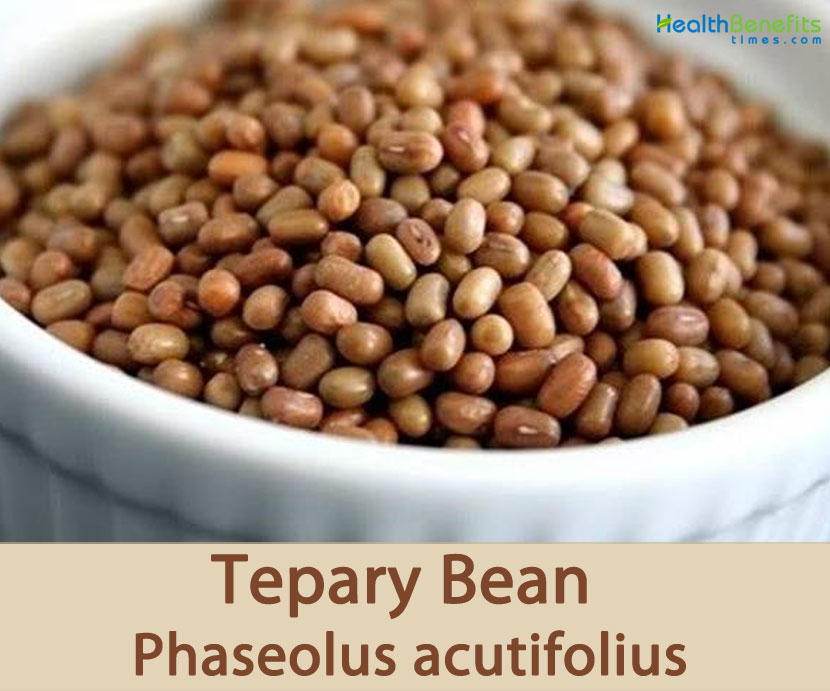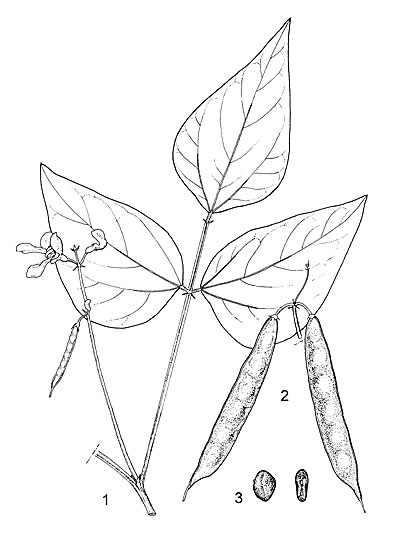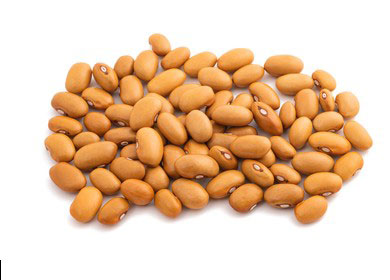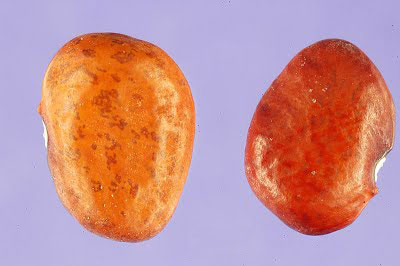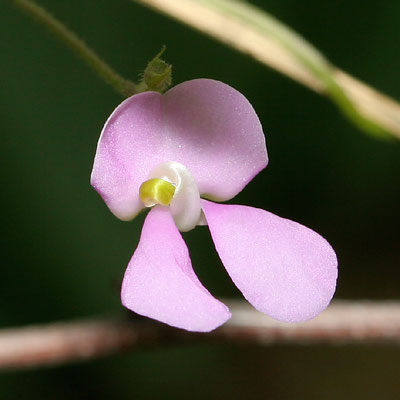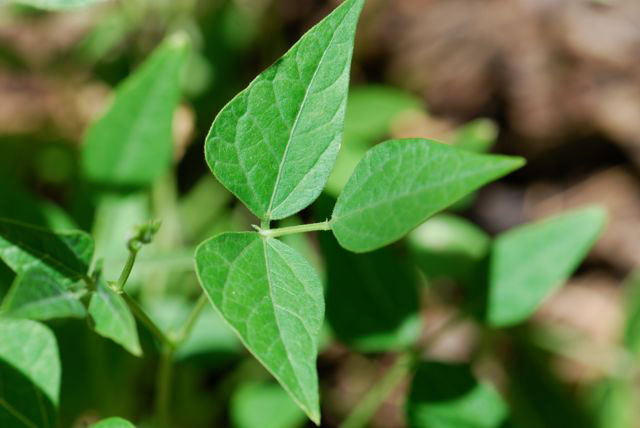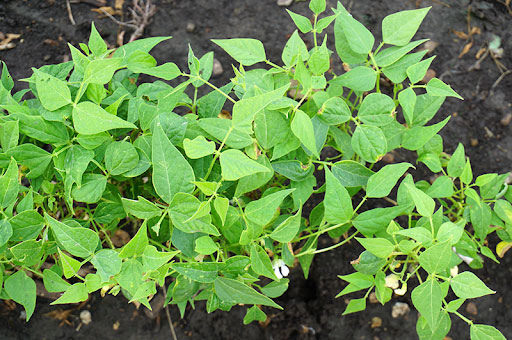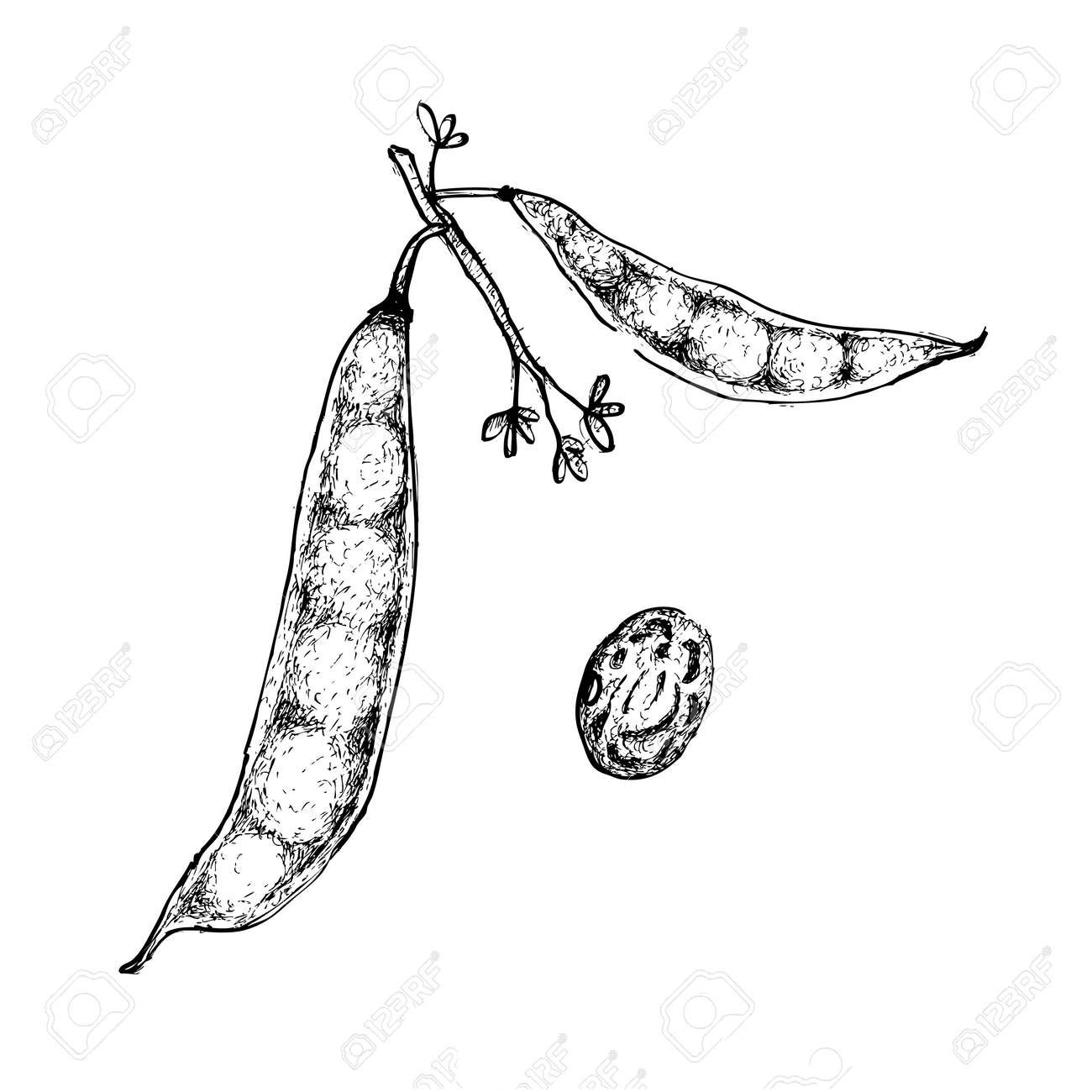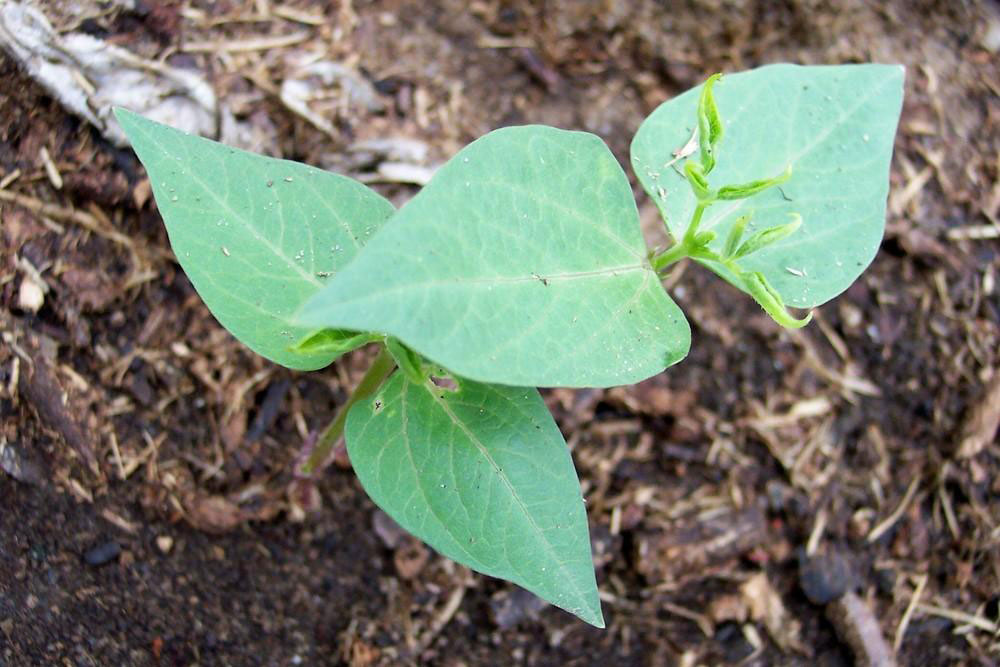The name tepary may derive from the Tohono O’odham phrase tʼpawi or “It’s a bean”. The name for a small bean was recorded in the 17th century, in the now extinct Eudeve language of northern Mexico, as tépar. Names that contain yori in them typically refer to non-native species of beans since those names mean “non-Indian person’s bean”. The plant is grown mainly for its edible seed and is said to have been in cultivation for over 5,000 years in southwestern N. America. Nowadays it is grown mainly in south-western USA and Mexico as a traditional pulse crop, though it is also cultivated, mostly on a small scale, in further parts of USA; Central America; the West Indies; Chile; Australia; S Asia; E and W Africa (Uganda, Mali, and Senegal). After World War II the cultivation decreased drastically in the traditional areas, the crop however is nowadays once more gaining interest.
Tepary Beans Facts
| Tepary bean Quick Facts | |
|---|---|
| Name: | Tepary bean |
| Scientific Name: | Phaseolus acutifolius |
| Origin | Southwestern United States and Mexico |
| Shapes | Compressed pod, straight or slightly curved, 5–9 cm long and 0.5–1 cm wide, rimmed on margins |
| Health benefits | Beneficial for lose weight, heart, diabetes, cancer, Stay young, Good for digestion, Boost your iron intake, Help prevent osteoporosis, Ultimate brain foods, Rich in foliate, Gluten-free, Muscles repairment |
| Name | Tepary bean |
|---|---|
| Scientific Name | Phaseolus acutifolius |
| Native | Southwestern United States and Mexico and has been grown there by the native peoples since pre-Columbian times. It is more drought-resistant than the common bean and is grown in desert and semi-desert conditions from Arizona through Mexico to Costa Rica |
| Common Names | Tepary bean, Texas bean, Pawi, Pavi, Tepari, Escomite, Yori mui, Yorimuni and Yori |
| Name in Other Languages | Afrikaans: Melkboontjie Albanian: Fasule e tepert Amharic: Arenigwadē bak’ēla (አረንጓዴ ባቄላ) Arabic: Alfaswlia (الفاصولياء) Armenian: T’eyi lobi (թեյի լոբի) Azerbaijani: Tepary lobya Bengali: Ṭēpāri śima (টেপারি শিম) Bulgarian: Teparinov bob (тепаринов боб) Burmese: Tepary bean Catalan: Mongetera tepary Chinese: Sān yuán dòu (三元豆), Kuān yè càidòu (宽叶菜豆) Croatian: Tepary grah Czech: Fazolové lusky Danish: Hepebønne, Tepary-bønne Dutch: Tepary bean, Tepary-boon English: Tepary bean, Texas bean Esperanto: Fazeolo, Tepari-fazeolo Estonian: Tepary bean Filipino: Apong bean Finnish: Tepary papu, Papu French: Haricot tepary Georgian: Tikhis lobio (თიხის ლობიო) German: Tepary Bohne, Teparybohne, Tepary-Bohne Greek: Fasóli (φασόλι), Fasoli tepary (Φασόλι τεπαρι), Mexikánika fasólia (Μεξικάνικα φασόλια) Gujarati: Ṭēparī bīna (ટેપરી બીન) Hausa: Wake tepary Hebrew: שעועית ערבה Hindi: Tipaee sem (तिपाई सेम) Hungarian: Tepary bab Icelandic: Tepary baun Indonesian: Kacang tepary Irish: Bean tepary Italian: Fagiolo tepario, Fagiolo Tepary, Fagiolo tepari Japanese: Teparībīn (テパリービーン) Javanese: Kacang buncis Kannada: Ṭepari huruḷi (ಟೆಪರಿ ಹುರುಳಿ) Kazakh: Burşaq burşağı (бұршақ бұршағы) Korean: 4 gi kong (4 기 콩) Kurdish: Bejî ya zêde Lao: Thouaheuong (ຖົ່ວເຫຼືອງ), thov (ຖົ່ວ) Latin: Faba quoque tepary Latvian: Tepary pupiņa Lithuanian: Tepary pupos Macedonian: Techen grav (течен грав) Malagasy: Tsaramaso satroka Malay: Tepary kacang Malayalam: Teppaṟi bīn (ടെപ്പറി ബീൻ) Maltese: Fażola teparja Marathi: Teparee been (टेपरी बीन), taiparaiai baiain Mayan: Xmayum Mongolian: Tepary buurtsag (Tepary буурцаг) Nepali: Teparee been (टेपरी बीन) Norwegian: Tepary bønne Oriya: ଟେପରୀ ବିନ୍ Pashto: تپري لوبیا Persian: لوبیای ترشی Polish: Fasola tepary, Fasola Ostrolistna Portuguese: Feijão tepário Punjabi: Ṭēparī bīna (ਟੇਪਰੀ ਬੀਨ) Romanian: Fasole tepară, Fasole Cu Frunze Ascutite Russian: Boby tepary (бобы тепари), Fasol Ostrolistnaya (Фасоль остролистная), Fasol’ ostrolistnaia, Tepari (Тепари) Serbian: Tepari bean (тепари беан) Sindhi: ٽپيري جي ٻو Sinhala: Tepari bōṁci (ටෙපරි බෝංචි) Slovakian: Fazuľa končistolistá Slovenian: Tepary fižol Spanish: Frijol tepary, Escomite, Escumite, Frijol piñuelero, Judía tépari, Tépari, garbancillo bolando Sudanese: Buncis tepary Swedish: Tepary böna Tajik: Lūʙijoi tepary Tamil: Ṭeppari pīṉ (டெப்பரி பீன்) Telugu: Ṭepāri bīn (టెపారి బీన్) Thai: T̄hạ̀w tepary (ถั่ว tepary) Turkish: Terbiyeli fasulye Ukrainian: Kvasolya (квасоля), Kvasolya Zolotistaya Urdu: ٹپری بین Uzbek: Tepalik loviya Vietnamese: Dậu tepary welsh: Ffa tepary Zulu: Ubhontshisi onobuhlakani |
| Plant Growth Habit | Climbing, trailing or more or less erect and bushy herbaceous annual plant |
| Growing Climates | Usually found growing along srream beds and dry washes in pine-oak forest, scattered among small bushes and cacti |
| Soil | Light, well-drained soils are preferred; reasonable yields can be obtained on poor sandy soils with pH 5–7. Tepary bean does not tolerate waterlogging, and heavy clays are unsuitable. It is moderately tolerant of saline and alkaline soils |
| Plant Size | Up to 30 cm high |
| Stem | Stems are usually prostrate, or climbing, but can sometimes grow upwards, unsupported. Stem and leaves are generally hairless, but may have a fine covering of very short hairs. |
| Leaf | Leaves are divided into three leaflets; one terminal, and an opposite pair just below. Leaflets are widest below the middle; broadly or narrowly lanceolate in shape, with a smooth, shiny surface and crossed by several prominent veins. |
| Flower | Flowers are bisexual, papilionaceous; pedicel 3–7 mm long. Calyx is campanulate, 3–4 mm long, the upper 2 lobes united into one, the lower 3 triangular. Corolla is white, pink or pale lilac, standard half-reflexed, broad, emarginate, up to 1 cm long, wings up to 1.5 cm long, keel narrow, coiled |
| Fruit Shape & Size | Compressed pod, straight or slightly curved, 5–9 cm long and 0.5–1 cm wide, rimmed on margins, with short but distinct beak, hairy when young |
| Seed | Roundish to oblong, about 8 × 6 mm, white, yellow, brown or deep violet, sometimes variously flecked. The seeds absorb water very easily. |
| Propagation | By seed |
| Health Benefits |
|
| Traditional uses and benefits |
|
Plant Description
Tepary bean is climbing, trailing or more or less erect, bushy herbaceous annual plant with stems up to 4 m (13 ft.) long. The plant is found growing along stream beds, dry washes in pine-oak forest, scattered among small bushes and cacti. Light, well-drained soils are preferred; reasonable yields can be obtained on poor sandy soils with pH 5–7. Tepary bean does not tolerate waterlogging, and heavy clays are unsuitable. It is moderately tolerant of saline and alkaline soils. Stems are usually prostrate, or climbing, but can sometimes grow upwards, unsupported. Stem and leaves are generally are hairless, but may have a fine covering of very short hairs.
Leaves
Alternate leaves are divided into three leaflets; one terminal, and an opposite pair just below. Petiole is 2–10 cm long and stipels are linear, up to 2 mm long. Leaflets are ovate to ovate-lanceolate, 4–8 cm long and 2–5 cm wide, acute and usually pubescent below. They are widest below the middle; broadly or narrowly lanceolate in shape, with a smooth, shiny surface and crossed by several prominent veins.
Flowers
Inflorescence an axillary raceme, 2–5 flowered. Flowers are bisexual, papilionaceous; pedicel 3–7 mm long. Calyx is campanulate, 3–4 mm long, the upper 2 lobes united into one, the lower 3 triangular. Corolla is white, pink or pale lilac, standard half-reflexed, broad, emarginate, up to 1 cm long, wings up to 1.5 cm long, keel narrow, coiled. The banner petal is the largest; it has a notch at the top and its edges are slightly curved inwards. The two wing petals are angled outwards and downwards, separated by the twisted keel petals, colored white to green. Stamens 10, 9 fused and 1 free; ovary superior, c. 0.5 cm long, densely pubescent, style with a thickened terminal coil, with collar of hairs below the stigma. Flowers appear with the summer rains, first appearing in late August.
Fruit
Fertile flowers are followed by compressed pod, straight or slightly curved, 5–9 cm long and 0.5–1 cm wide, rimmed on margins, with short but distinct beak, hairy when young, 2–9-seeded. Seeds are globose to oblong, 4-10 mm long and 2- 7.5 mm wide, white, yellow, brown, purple, black or variously speckled, dull. They mature 60 to 120 days after planting.
Health benefits of Tepary bean
Tepary bean consists of high fiber content, which is excellent for people with diabetes, because it causes a slower release of its sugars. It is also rich in protein and a wide range of minerals like calcium, magnesium, potassium, phosphorus, iron and zinc. The main health benefits of this legume can be attributed to its high fiber content and the presence of amylase, a type of starch that is digested very slowly. Given below are some of the benefits provided by tepary beans
1. Helps lose weight
Tepary beans can be a wonderful addition to a healthy weight loss diet because they are densely packed with important nutrients and give you the feeling of fullness for long periods of time. They are high in fiber and protein content, both of which are essential nutrients when you are trying to lose weight. While proteins help improve your satiety and burning of calories, fiber keeps you feeling fuller for longer hours. When you eat foods that are high in glycemic index, it causes a rapid spike in blood sugar levels that in turn triggers the fast release of insulin that lowers your blood sugar again. This rapid change in blood sugar levels leaves you feeling hungry. Tepary beans, on the other hand, have a low glycemic index, which is another plus point when you are on a weight loss diet. Foods with low glycemic index help in avoiding drastic changes in the blood glucose levels.
2. Good for your heart
High levels of LDL cholesterol or bad cholesterol in the blood is one of the leading causes of heart diseases. LDL can stick to the walls of your blood vessels and cause inflammation as well as the build-up of plaque. High amount of fiber in tepary beans play an important role in lowering the bad cholesterol levels in the blood. Fiber binds with cholesterol and prevents its absorption in the gut. Tepary beans also contain good amounts of phytosterols and saponins that are helpful in lowering cholesterol. In addition to dietary fiber, these beans are also rich in various minerals that help lower the risks of heart attacks and stroke. They are good sources of potassium and magnesium, two minerals essential for your heart. Potassium helps remove excess water and sodium from your body, which helps in reducing blood pressure. Magnesium also helps in lowering blood pressure along with improving the functioning of nerves.
3. Manage diabetes
Tepary bean can be called a super food for people suffering from diabetes. Not only does it provide sustained energy and prevent hunger pangs, the high fiber content in this legume causes it to be digested slowly. This, in turn, helps with the slow release of sugars, thus preventing unnecessary spikes in blood glucose levels. Eating foods that cause slow release of sugars, helps people control their metabolism, thus reducing the risk of developing diabetes. These foods also prolong the feeling of fullness and prevent overeating. Many people suffering from type II diabetes have reported that the consumption of tepary beans has led to more effective regulation of their blood sugar levels. In fact, some people who follow a high fiber diet that includes these beans have even been able to stop their doses of supplementary insulin.
4. Fight cancer
Research has proven that the consumption of beans and other legumes not only provide a wide range of health benefits but also work in many ways to prevent cancer. Tepary beans are high in many plant chemicals like isoflavones and phytosterols that can fight cancer. These chemicals have powerful antioxidant properties that help in neutralizing the damaging effects of the free radicals. Frequent eating of beans has been found to play a major role in lowering the risk of different types of cancers like breast, prostate, gastric, colon and renal cancers.
5. Stay young
Tepary beans are loaded with antioxidants that help you maintain a youthful skin. These antioxidants help your body fight the natural signs of aging such as wrinkles and fine lines by improving your immune strength and destroying the free radicals that can cause damage to the healthy cells. Tepary beans are also high in protein that helps you build lean muscle.
6. Good for digestion
High amount of both soluble and insoluble fibers in tepary beans helps to keep your digestive system functioning smoothly. While soluble fiber slows down the process of digestion and gives you the feeling of fullness, insoluble fiber adds bulk to the stool, thus aiding in its smooth and easy removal from the intestine. This helps in preventing constipation and other digestive disorders like irritable bowel syndrome. Although some beans have the bad reputation of causing gas and bloating, tepary bean is an exception.
7. Boost your iron intake
Insufficient iron in your body can lead to iron deficiency anemia, a condition where your body does not have the normal count of red blood cells. This can lead to weakness, fatigue, nausea, shortness of breath and many other problems. Eating beans like tepary beans on a regular basis is a great way to increase your iron intake. However, since beans fall under the category of plant food, they contain non-heme iron, which is not readily absorbed by your body. So in order to ensure better absorption, it is recommended that you eat tepary beans with foods high in vitamin C content such as citrus fruits, broccoli, bell peppers and tomatoes because vitamin increases the absorption of non-heme iron by about six times.
8. Help prevent osteoporosis
Osteoporosis is a bone disorder characterized by the loss of bone mass. People with this condition have higher risks of fractures. Getting enough calcium in your diet is the most important remedy to prevent osteoporosis. Tepary beans are rich in calcium and so adding them to your regular diet is a great way to get the amount of calcium your body needs.
9. Ultimate brain foods
Tepary beans are one of the most beneficial brain foods. They are excellent sources of brain healthy nutrients like vitamins, minerals, amino acids and antioxidants. They contain a certain B-complex vitamins that help in the formation of brain cells. These vitamins help improve your memory, cognitive skills and also ensure proper functioning of the brain.
10. Rich in foliate
Tepary beans are a great source of foliate, a B group vitamin that is important for a number of bodily functions. It plays a key role in the production of red blood cells as well as the development of a fetus’s nervous system during the early stages of pregnancy. Doctors recommend the intake of folic acid during pregnancy because it helps in reducing the risk of neural tube defects in newborns.
11. Gluten-free
It is important for people with celiac disease to avoid eating foods containing the protein gluten. Eliminating these foods from their diet often leads to an increase in the risk for deficiency of various nutrients including B-vitamins. Beans such as tepary beans are naturally free from gluten and they also have the advantage of containing many of the nutrients found in enriched grain products.
12. Muscles repairment
Tepary beans are said to be a good source of protein and protein is essential for the building and repairing of the muscles. Thus, it is regarded as one of the best sources of protein for everyone, especially for vegetarians.
Culinary uses of Tepary bean
- Tepary beans are used mainly as dry shelled beans, in Mexico and Uganda to prepare a soup.
- Mature seeds are used as dry shell beans to make soups.
- They are also ground into flour; fried; parched; or processed into a meal for commercial use.
- The young, green seedpods are occasionally eaten.
- The seeds can be sprouted and then eaten cooked or in salads.
- They are ideal for soups, stews, and cold salads because they stay whole when cooked.
- When pureed, teparies have a creamy texture so they can also be used for dips and creamy soups.
- In Uganda the dry seeds are usually boiled and then coarsely ground before being added to soup.
- Occasionally it is eaten as a green bean or as bean sprouts.
Other Facts
- In the USA the plants have been tried as a hay and cover crop.
- Tepary bean has occasionally been grown as a green manure, e.g. in the United States.
- It may also be used as a cover crop and an intercrop in agroforestry systems.
- Pods and stems remaining after removing the seed may be used for animal feed.
- In Botswana the seeds are a common supplementary feed for chickens.
- Tepary bean has occasionally been grown for fodder or green manure, e.g. in the United States.
- It may be used as a cover crop and an intercrop in agroforestry systems.
References:
https://www.itis.gov/servlet/SingleRpt/SingleRpt?search_topic=TSN&search_value=26840#null
https://npgsweb.ars-grin.gov/gringlobal/taxon/taxonomydetail?id=27549
https://plants.usda.gov/home/plantProfile?symbol=PHAC
https://gd.eppo.int/taxon/PHSAF
https://uses.plantnet-project.org/en/Phaseolus_acutifolius_(PROSEA)
http://tropical.theferns.info/viewtropical.php?id=Phaseolus+acutifolius
https://en.wikipedia.org/wiki/Phaseolus_acutifolius
https://www.cabi.org/isc/datasheet/40614


